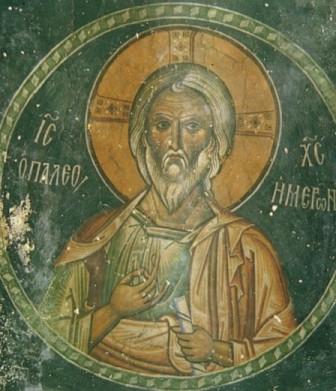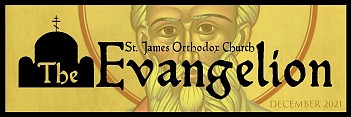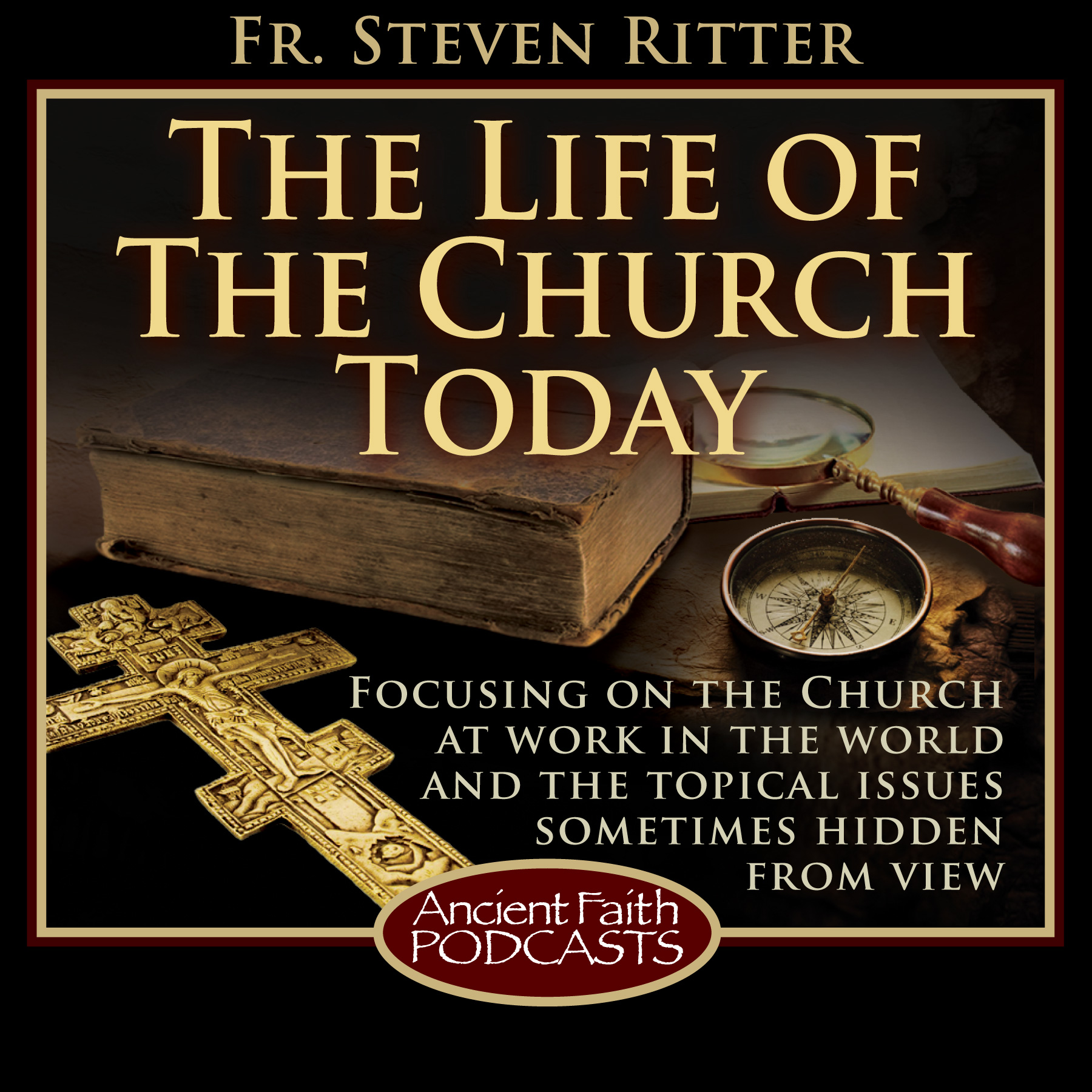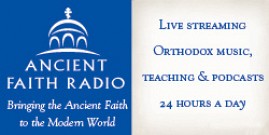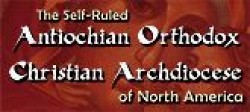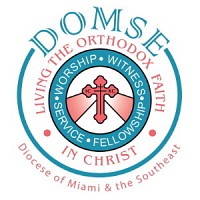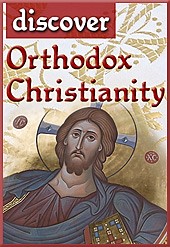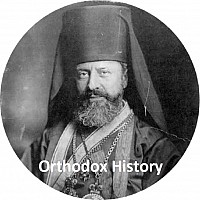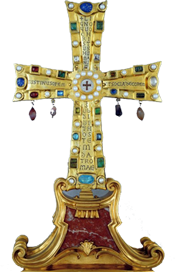by Fr. Steven Ritter
The Ancient of Days—what a mysterious image this conjures up for most of us. After all, the very title seems full of mystery. “Ancient” how? We normally think of something ancient as something very old, something relegated to the distant past, something almost assuming the proportions of the mythological or legendary. But at the very least, something that we can only speculate on as in a dream, or a hazy sense of long ago. And what of “Days”? Well, this term has great significance in the biblical world. “Day” is usually a word used to indicate great seriousness of purpose and finality, as in the “day of wrath”, “day of judgment”, or the “day of the Lord”. In each case a reckoning of some sort is brought into focus, and the word can also indicate an indefinite period of time.
In our current case, “day” magnified by “days” suggests eternity. The “Ancient” one then is a personage of some sort that would be present from the beginning—ancient—and have existed for all eternity. In the holy scriptures we find this title most extensively used in the Old Testament Book of Daniel, and the New Testament Revelation according to St. John, the beloved disciple. The description is that of a heavenly man of some sort with a beard as white as snow. For this reason he is sometimes referred to as an “old man”, but this is not correct as his age is never mentioned, and even the appellation “ancient” means that he is beyond such temporal concerns as time or age.
Daniel of course saw Him in a vision, as did St. John, but the Old Testament is always interpreted in the light of the New, with the old often serving as a type of the new. So while we may look to the old for clues as to the initial meaning of something, the new will give us the complete answer, and the questions or confusions pertaining to the subject in the Old Testament must of necessity be interpreted according to the light of Christ and His subsequent revelation given to us. Many believe, for reasons to be stated, that this person is an image of God, the Eternal Father. Some of the fathers of the Church also thought this. But the Church in her wisdom teaches us otherwise, and clears up the mystery of identity for us. So who or what is the Ancient of Days?
The Ancient of Days is the Son of God and not the Father.
The prophet Daniel saw God in the form of a white haired man whom he called the Ancient of Days. Some say it was God the Father because of confusion over the vision in the book of Daniel. The teaching of the Orthodox Church says it is the Son of God. The Book of Daniel is the “Book of Revelation” of the Old Testament. Written more than five-hundred years before Christ, the book is purely eschatological from Chapters 7-12, with prophecies about the end times. They begin with Daniel's “night visions” in Chapter 7. The prophet saw a tribunal or judgment:
The thrones were set and the Ancient of Days took His seat…His raiment was white as snow, and the hair of His head as pure wool…His throne was a flame of fire...A river of fire rushed before Him...The tribunal sat and the books were opened…And the beast was given over to the burning of the fire. (7:9-11)
Daniel then describes a succession of great empires and nations leading to the most powerful ruler in history, the Antichrist, who “made war with the saints...for a time and times and half a time” (3.5 years] (v.20, 25), and “prevailed against the saints until the Ancient of Days came, and judgment was passed.” Here we discover that the Ancient of Days will have the power of judgment at the final day. Twice Daniel tells us the beast's dominion will be utterly destroyed and the Kingdom of the Most High will be everlasting. The Ancient of Days, up to this point, is easy to identify as our Lord Jesus Christ “Who is coming again to judge the living and the dead, Whose kingdom will have no end.” But there are complications--the white hair, the name "Ancient of Days", and the following vision described between the two narrations on the destruction of the Antichrist's dominion (7:13-14):
I beheld one coming with the clouds as the Son of man, and he came unto the Ancient of Days, and was brought near to Him. To him was given the dominion, and the honor, and the kingdom. His dominion is an everlasting dominion which shall not pass away.
This is where one may become confused—understandably--and say, “The Son of Man is Christ, so the Ancient of Days must be God the Father.” How can the Ancient of Days “come” unto the Ancient of Days? Can one “come” unto himself? Yet we must not be too literal in our understanding of this passage, for it is a vision, and it is before the dispensation of the God-man Jesus Christ. A vision is rarely meant to be taken literally, but is representative of deeper, more profound truths. But a closer look at the Scriptures and at the Church's teachings will reconfirm that the Ancient of Days is the Son of God. Pay special attention to the parallels, the imagery of the “types”.
Daniel says the Ancient of Days is “coming with the clouds.” Christ says He is “coming on the clouds with great power and glory.” (Mt. 24:30)
Daniel says the Ancient of Days comes to “utterly destroy the dominion of the beast who will wear out the saints and prevail against them.” Christ says He is “cutting short the days and coming for the sake of the elect or no flesh would be saved.” (Mt.24:22)
Daniel says the Ancient of Days presides at the judgment. Christ says, “the Father hath committed all judgment to the Son.” (Jn.5:22)
Daniel says, the “wild beast was slain and given to the fire” by the Ancient of Days. St. Paul says Christ “will slay the lawless one with the breath of His mouth,” (2Thes.2:8) and raise him up and the false prophet, and “cast them alive into the lake of fire to be tormented with Satan day and night forever and ever.” (Rev.19:20; 20:l0)
Daniel says, “thousands of thousands ministered to Him [Ancient of Days], and ten thousands of myriads attended upon Him.” St. John says (referring to the worship of the lamb, Christ), “and the number of them was ten thousand times ten thousand and thousands of thousands saying, Worthy is the Lamb that was slain...” (Rev.5:ll, 12)
The mystery that was “hidden from the beginning of the world.”
St. John's Revelation brings Daniel's vision into the light: “I was in the Spirit on the Lord's day when I heard a loud voice like the sound of a trumpet…and turned and saw someone ‘like a Son of Man’…And His head and His hair were white like wool, as white as snow.” (Rev.1:l0, l4) And He said, “I am the First and the Last, He that liveth and was dead, and behold I am alive forevermore, and I have the keys of death and Hades. Write therefore...” (Rev 1:17-19) He identifies Himself as the “Son of God” (2:18), “the origin of God's Creation” (3:14), “Alpha and Omega, the first and the last, the beginning and the end…I, Jesus...” (22:13, 16)
This was no night vision.
St. John knew and lived with the Lord and witnessed His works up close. But for Daniel, these were a future promise and the Son of Man was a dream in the night. Daniel died in faith, “not having received the promise, but having seen it and greeted it from afar.” (Heb.1l:83) St. John was the beloved disciple who put his head to the Lord's breast. The author of the Gospel of John says the One with “hair white like wool” is the Son of Man and God. Who can doubt it?
Does this make Daniel’s vision less trustworthy? Is not his prophecy inspired by God, and considered as such by the Church? Of course! But let us remember that in the Church there is a hierarchy of importance with regard to the scriptures. The Gospels, first and foremost, have a place on our altars. The writings of St. Paul and the other disciples follow suit, being interpreted in the light of the Gospels. The Psalms are the par excellence book of prayer for the Church, and the books of Moses, the greater and lesser prophets all have their place. Daniel’s vision is given in his time, before the illumination of the divine energies upon the world in the person of Christ, and the Lord completes his law and prophets by the definitive explanation given by St. John’s revelations.
Daniel's vision of the Son of Man approaching the Ancient of Days is explained by the Fathers as a vision from afar of the union of the pre-eternal Word and flesh. The “Son of Man” in Daniel is not yet the complete Incarnate Lord but an image of His human nature only. The Word and Son of God appears in the form of the white haired Ancient of Days, at once revealing “the fellowship of the mystery which, from the beginning of the world, was hidden in God,”(Eph.3:9) “the mystery which was hidden from the ages and from generations” (Col.1:26), and prefiguring as well (as a type) the certainty of the future Incarnation by receiving the human nature that has come, rather, has consented through the Theotokos, to give Him humanity.
His white hair, a traditional symbol of venerability, shows us He is the Lord, Alpha and Omega, not aged but ageless (Rev.22:13). Alpha because He is from before the ages and before all time, and Omega because His Second Coming will mean the end of the seventh day, the end of time, and the dawning of the eternal Eighth Day.
You see how St. John’s Revelation ties Daniel’s Ancient of Days to Christ? The Book of Revelation was not completely known or accepted in the early centuries, not until as late as A.D. 500. Compared to many of the other books, it had a rather “checkered” history, and was slowly accepted. The book is so obviously in the apocalyptic style of the Old Testament that it took the Church some time to determine its real value and genuineness. It is never read liturgically in the Church as its meaning is not always clear, but it does proclaim truths. So for some Fathers, the Ancient of Days was enigmatic. But, in time, all of the Church came to understand Daniel's dream, as her saints and hymns so concretely and aptly demonstrate:
“For it is His humanity that he names son of man.” (St. Athanasius, Epistle to Antiochus)
“But if he was a man honored as God because of a conjunction with God, Daniel would have said he saw one coming on the clouds like the Son of God, but rather says this, namely, like the Son of man.” (St. Cyril of Alexandria, Epistle to Anastasius, Alexander, Martinian, John...No.55.30)
“Daniel saw a type and image of what was to be in the future, i.e., the invisible Son and Word of God was to become truly man so He could be united with our nature.” (St. John of Damascus, On Div. Images, 3.26)
“In the likeness of a son of man, he foresees the incarnation of the Only-begotten One.” (St. Ammonius, P.G. 85, l380A)
“But what can I say? For the wonder astounds me. The Ancient of Days Who sits upon a high and exalted throne is laid in a manger.” (St. John Chrysostom, Homily on the Saviour's Birth)
“Let the earth bow down, let every tongue sing, chant, and glorify the Child God, forty-day old and pre-eternal, the small Child and Ancient of Days, the suckling Child and Creator of the ages." (St. Cyril of Jerusalem, Homily on the Presentation of the Lord)
“The just Symeon received into his aged arms the Ancient of Days under the form of infancy, and, therefore, blessed God saying, ‘Now lettest Thy servant depart in peace...’” (St. Methodius of Olympus, P.G.18, 3658)
“The Ancient of Days became an infant.” (St. Athanasius, Homily on the Birth of Christ)
“The Ancient of Days becomes an Infant for me...” (Matins, Kathisma)
“The Ancient of Days, Who of old gave the Law to Moses on Sinai, today is seen as an Infant...” (Lity of Vespers, Presentation of the Lord)
“The Ancient of Days, O all-holy One, descended in thy blessed womb as an eagle upon the fleece, and the Lover of Man appeared as a new Adam.” (Theotokion, 5th Ode, Matins, St. Polycarp of Smyrna, Feb.23)
“Thou hast borne incomprehensibly the Ancient of Days as a new Child Who showed us new paths of virtue upon the earth…” (Theotokion, 1st Ode of Friday Matins in the 5th tone)
“Thou hast borne the Ancient of Days as a new Child unto us...” (Theotokion, 8th Ode of Tues. Matins in the 6th tone)
“Thou hast surpassed the laws of nature, O pure Daughter, in bringing a new Child upon the earth Who is both the Lawgiver and the Ancient of Days...” (Theotokion, 8th Ode, Matins, 5th Sunday of Lent)
The Scriptures, the hymns, and consensus of the saints, as you have read, leave no doubt as to the mind of the Church in this question. Notice that in the proper iconographic depiction of the Ancient of Days, you will see the same nimbus (halo) and inscription (IC XC) as you would on any image of Christ. This is because the two are one and the same, and should be designated as such. The Ancient of Days, our Lord Jesus Christ, who was the sole divine person to appear to anyone at anytime in the Old Testament, is also the one who is worshipped forever in heaven, according to St. John’s revelation. To Him be glory, honor, and dominion, now and to all ages. Amen!
Fr. Steven
(with excerpts taken from The Ark, Jan-Mar 1989)
